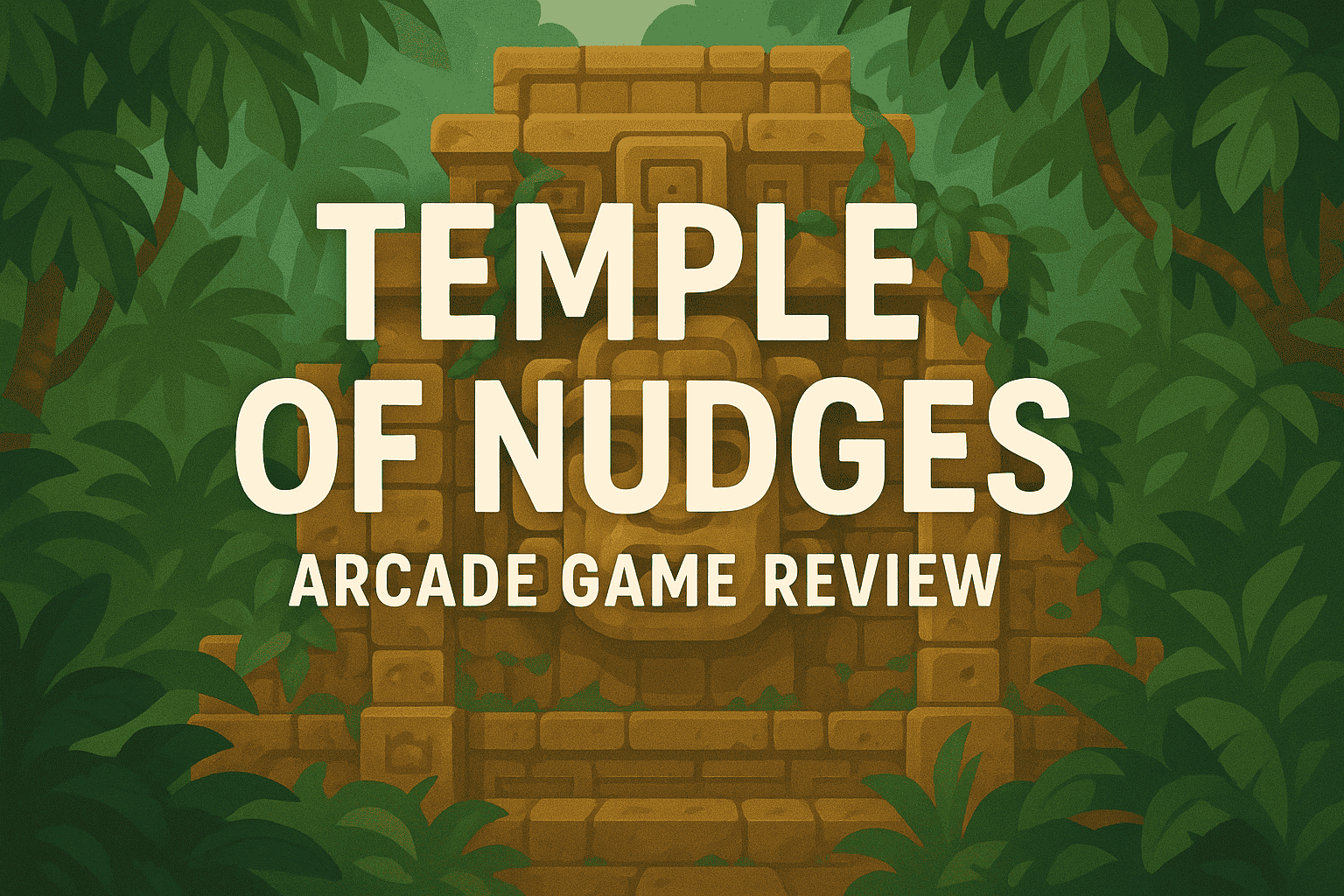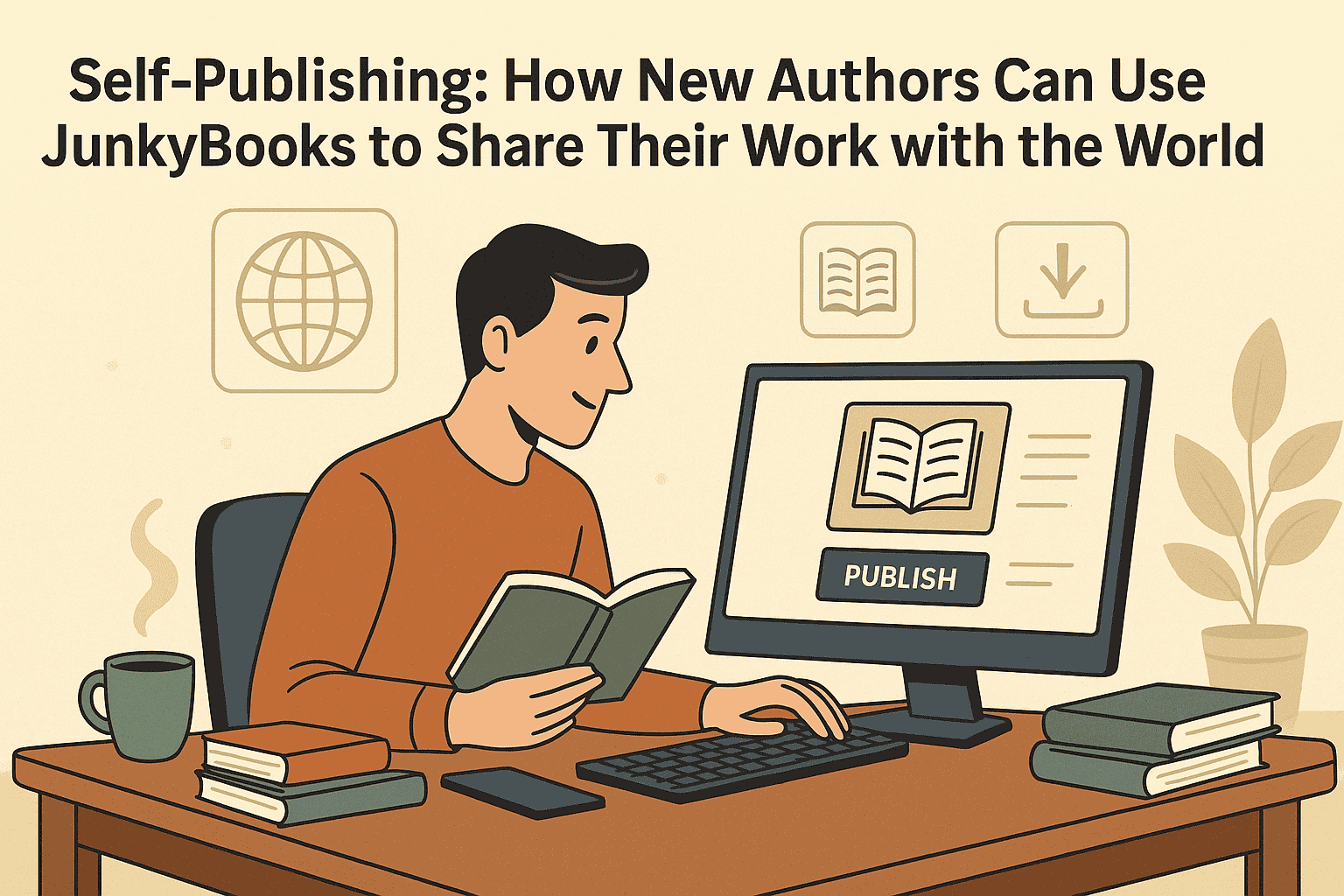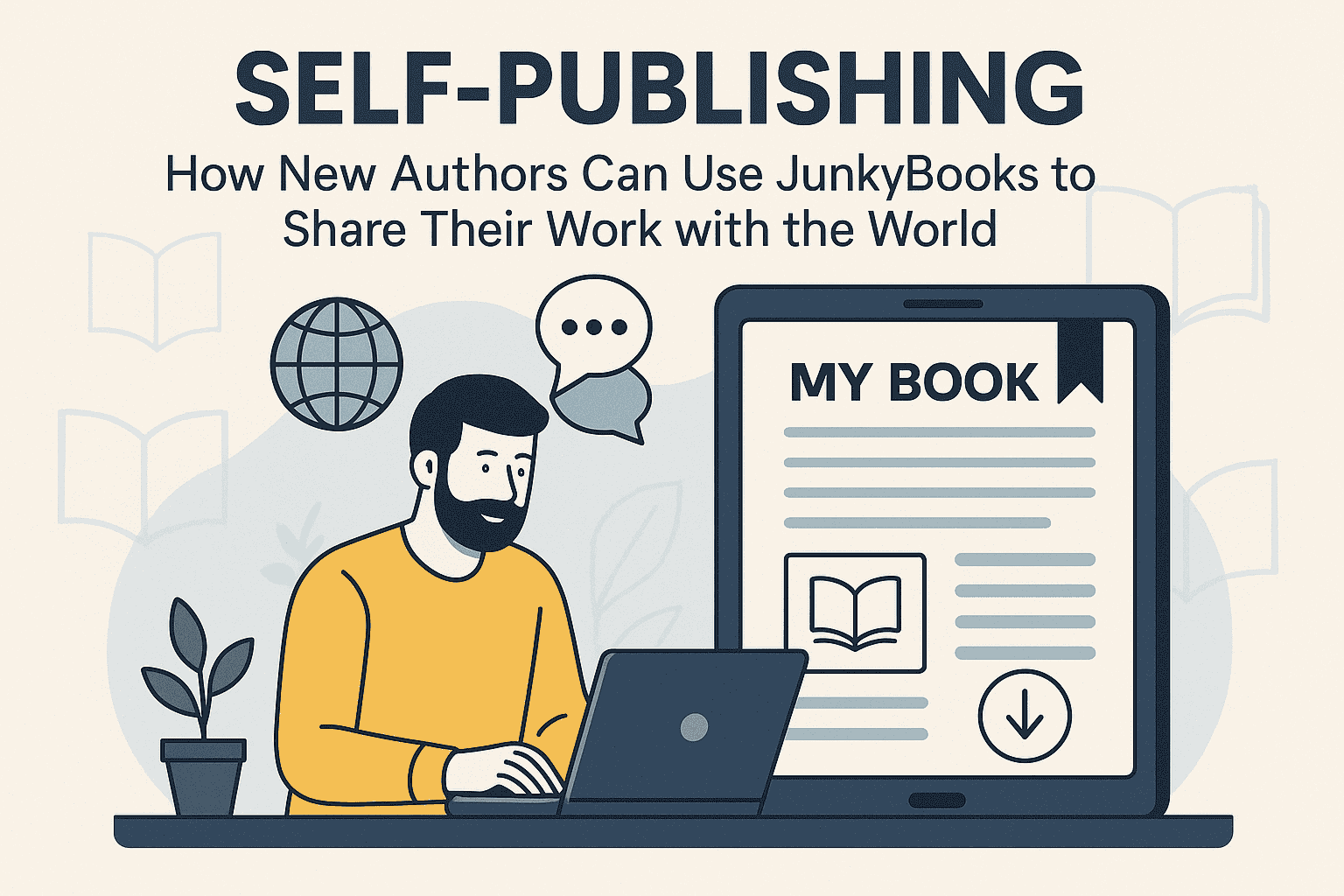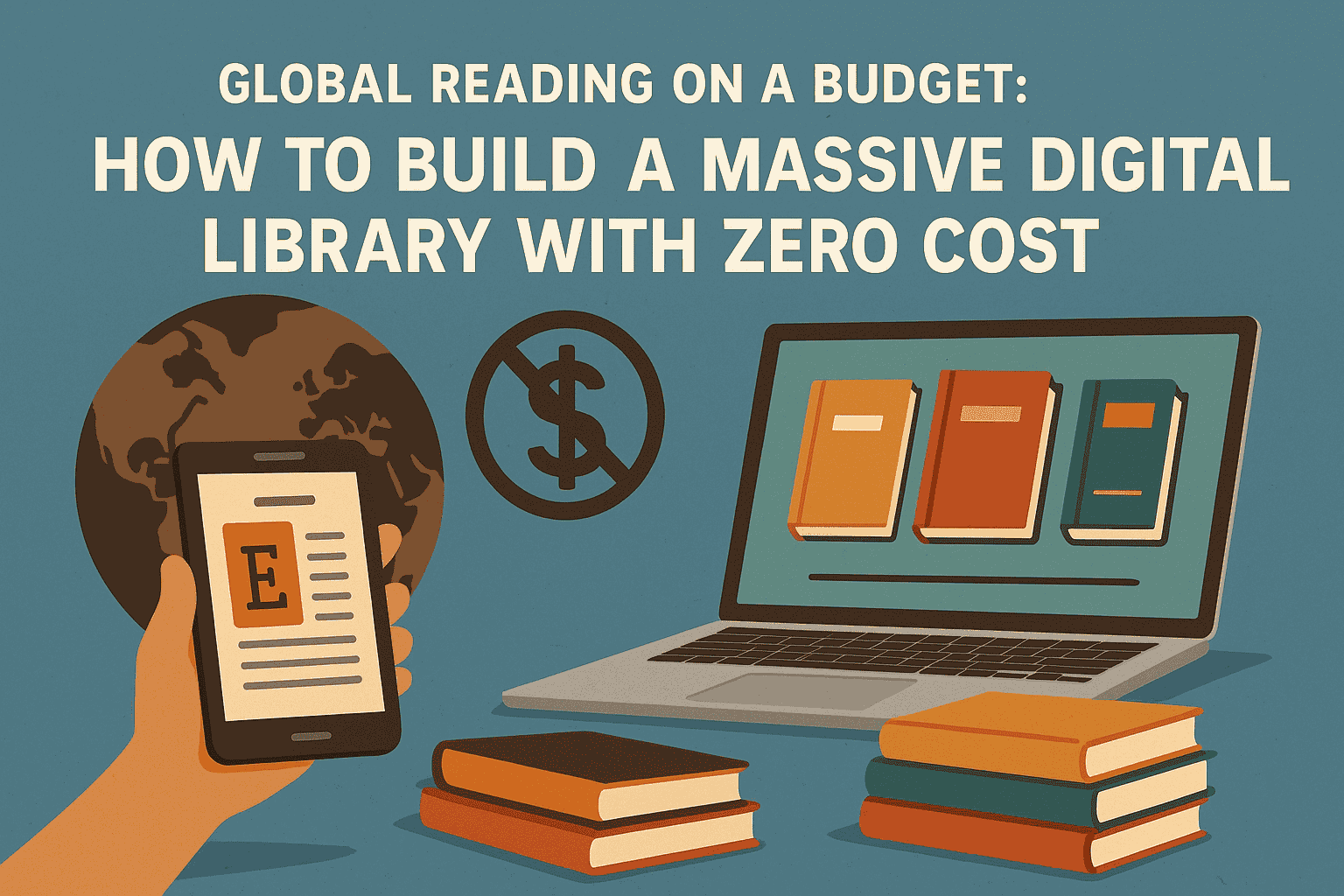Publishing on Amazon KDP: A Beginner’s Guide
Self-publishing has transformed the way authors bring their work to readers, and Amazon Kindle Direct Publishing (KDP) is at the center of this revolution. Whether you’re an aspiring novelist, a non-fiction writer, or a creator of children’s books, KDP offers an accessible, cost-free way to publish globally and earn royalties without a traditional publisher.
If you’re new to self-publishing, this guide will walk you step-by-step through how KDP works, how to prepare your manuscript, and how to maximize your success.
1. What Is Amazon KDP?
Amazon Kindle Direct Publishing is a self-publishing platform that allows authors to publish eBooks, paperbacks, and hardcovers and make them available to millions of readers worldwide through Amazon’s marketplace.
Key benefits:
-
Free to use – No upfront fees to publish.
-
Global reach – Your book is available in multiple countries.
-
Author control – You set the price, choose categories, and decide when to publish.
-
Fast publishing – Books can go live in 24–72 hours.
-
Royalties up to 70% – Depending on your pricing and territory.
2. What Can You Publish on KDP?
KDP supports:
-
Fiction and non-fiction books
-
Children’s books
-
Novellas and short stories
-
Low-content books (journals, planners, notebooks)
-
Textbooks and academic works
Amazon does have content guidelines, so make sure your work complies with its rules (no plagiarized or infringing content, hate speech, or prohibited topics).
3. Preparing Your Manuscript
Before uploading your book to KDP, you’ll need to polish and format it professionally.
Editing
-
Hire a professional editor if possible — it’s worth the investment.
-
If on a budget, at least use proofreading tools (Grammarly, ProWritingAid) and beta readers.
Formatting
Amazon recommends:
-
eBook formatting in EPUB or DOCX (Reflowable for most genres, Fixed Layout for children’s books).
-
Print formatting as a PDF that meets KDP’s trim size and margin requirements.
-
Use tools like Kindle Create (free from Amazon) or Vellum, Atticus, or Scrivener for professional formatting.
4. Designing a Professional Cover
Your book cover is the first impression — it directly impacts sales.
Options:
-
Hire a professional cover designer who understands your genre.
-
Use KDP’s Cover Creator for simple designs if you’re starting out.
-
Ensure your cover:
-
Is high resolution (300 DPI for print).
-
Matches your genre style.
-
Includes readable typography.
-
Pro tip: Study top-selling books in your category and note their cover trends.
5. Setting Up Your KDP Account
Go to kdp.amazon.com and sign in with your Amazon account or create a new one.
You’ll need to:
-
Enter your tax information (to receive royalties).
-
Provide payment details.
-
Agree to Amazon’s terms.
6. Uploading Your Book to KDP
Publishing on KDP happens in three main tabs:
A. Kindle eBook / Paperback Details
-
Book Title & Subtitle – Clear and keyword-friendly.
-
Series Name (if applicable).
-
Author Name – Use a consistent pen name.
-
Description – This is your sales pitch (include keywords naturally).
-
Keywords – Up to 7 keyword phrases that readers might search.
-
Categories – Choose 2 that best match your book’s genre.
-
Age & Grade Range – For children’s or educational books.
B. Content
-
Upload your manuscript file (EPUB for eBook, PDF for print).
-
Upload your cover file or use Cover Creator.
-
Preview your book with Amazon’s Online Previewer to check layout.
-
For print books, choose:
-
Trim size (e.g., 6x9 inches for most paperbacks).
-
Interior type (black-and-white or color).
-
Paper color (cream, white, or color paper).
-
C. Rights & Pricing
-
Select territories (usually “Worldwide Rights” if you own them).
-
Choose royalty rate:
-
eBooks – 35% or 70% (70% has pricing and territory rules).
-
Print – 60% minus printing cost.
-
-
Set your list price — research similar books in your niche.
7. KDP Select and Kindle Unlimited
KDP offers an optional program called KDP Select. Enrolling means:
-
Your eBook is exclusive to Amazon for 90 days.
-
It becomes available in Kindle Unlimited (a subscription service where you earn per page read).
-
You can run special promotions:
-
Free Book Promotions (up to 5 days every 90 days).
-
Kindle Countdown Deals (time-limited discounts).
-
Pros: Increased visibility, access to a large KU reader base.
Cons: Exclusivity — you can’t sell your eBook on other platforms during enrollment.
8. Understanding Royalties and Payments
-
eBooks (70% royalty) – Must be priced between $2.99–$9.99 and meet other criteria.
-
eBooks (35% royalty) – For prices outside that range or certain territories.
-
Print books – 60% royalty minus printing cost.
-
Payments are made 60 days after the end of the month in which sales occur.
9. Marketing Your KDP Book
Publishing is only half the job — marketing is what gets your book into readers’ hands.
Optimize Your Book Page
-
Use a compelling description with HTML formatting (bold, italics, bullet points).
-
Ensure your author bio on your Amazon Author Central page is updated.
Get Reviews
-
Send ARCs to readers before launch.
-
Politely ask early buyers for honest reviews.
Run Promotions
-
Use KDP Select promos.
-
Try Amazon Ads to target readers searching for similar books.
Leverage Social Media and Email
-
Share your book on platforms where your target audience hangs out.
-
Build and engage an email list for future launches.
10. Common Mistakes New KDP Authors Make
-
Rushing to publish without editing or professional formatting.
-
Poor cover design that doesn’t fit the genre.
-
Ignoring keywords and categories, making the book hard to find.
-
Pricing too high or too low without market research.
-
Neglecting marketing, expecting Amazon to do all the promotion.
11. Tracking Performance
Once your book is live:
-
Monitor sales and page reads in your KDP dashboard.
-
Use data to adjust pricing, keywords, or marketing strategies.
-
Be patient — building traction takes time.
12. Advantages and Limitations of KDP
Advantages:
-
Free and accessible.
-
Wide reach through Amazon’s global platform.
-
Control over pricing, content, and rights.
-
Fast publishing process.
Limitations:
-
Heavy competition — your book needs to stand out.
-
Amazon controls discoverability through its algorithms.
-
KDP Select exclusivity limits distribution to other platforms.
Conclusion
Amazon KDP has leveled the playing field for authors, allowing anyone with a story to share it with the world. For beginners, it’s an excellent starting point — but success requires more than simply uploading a manuscript.
By preparing your book professionally, understanding KDP’s tools, and planning a solid marketing strategy, you can maximize your visibility, earn consistent royalties, and build your author brand.
Remember: on KDP, your book’s success is in your hands — and that’s a powerful thing.







